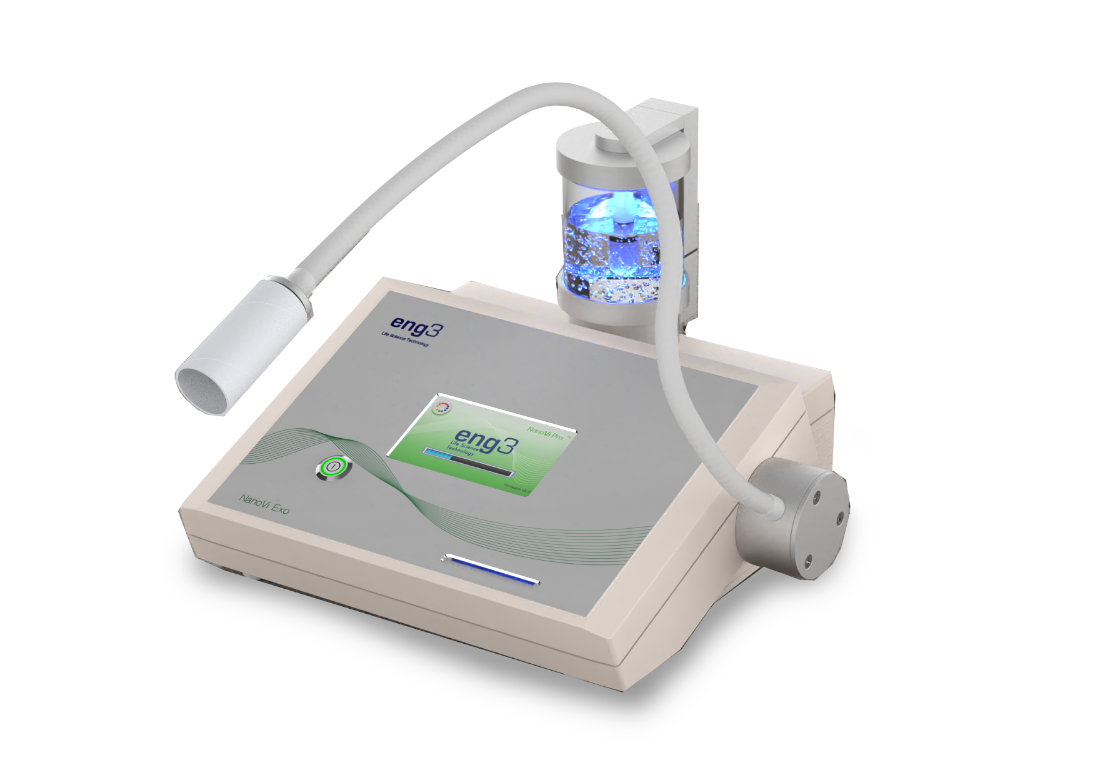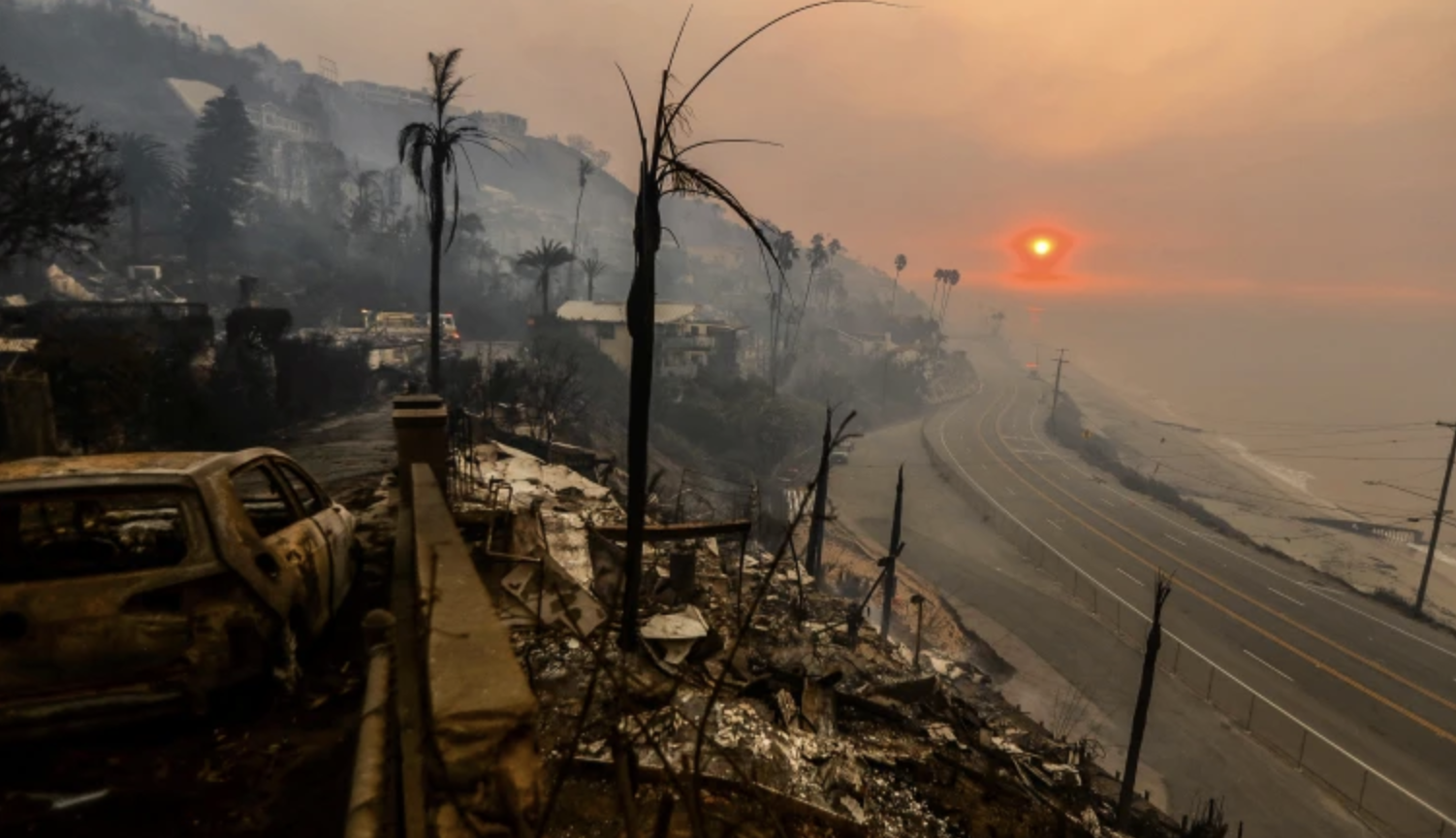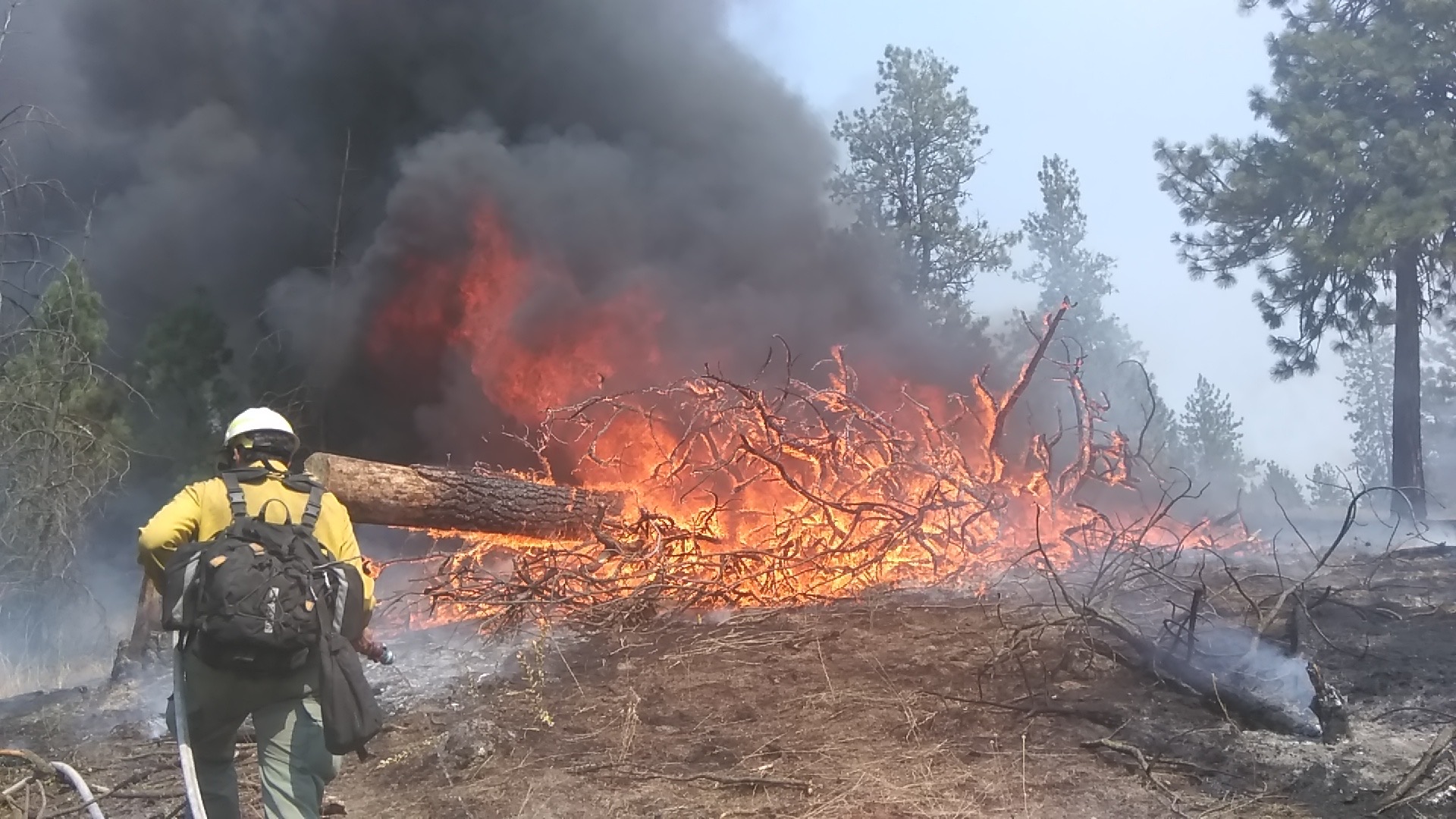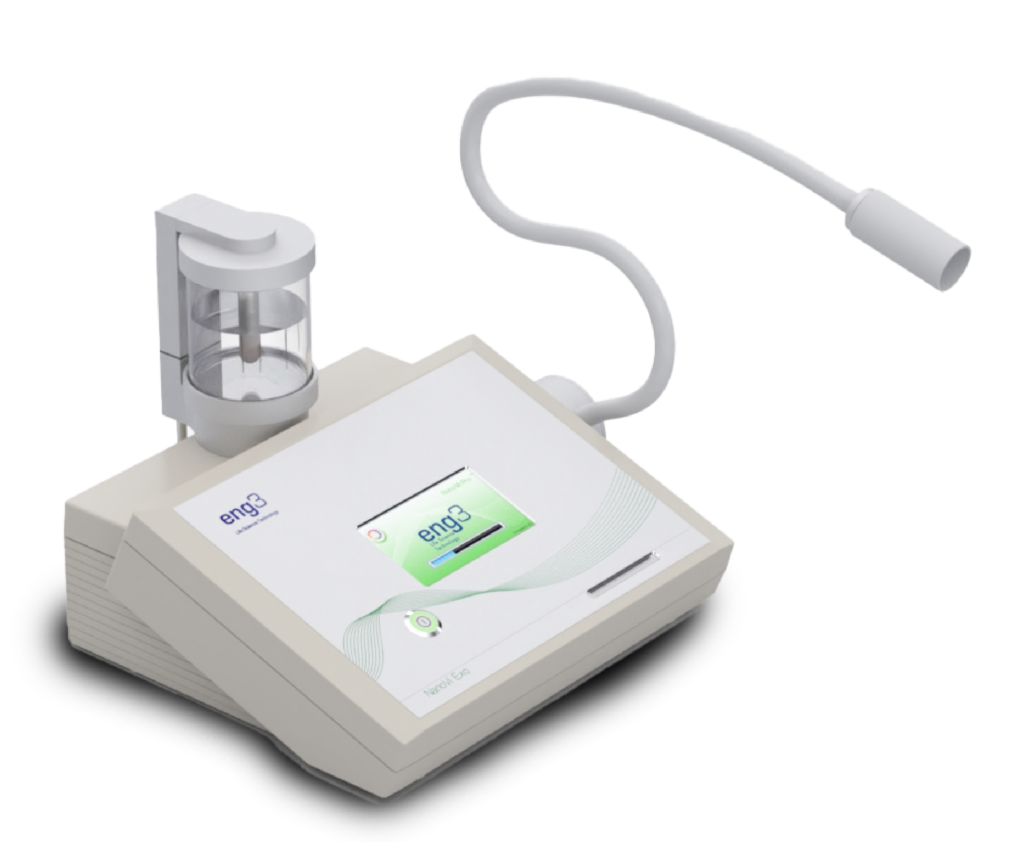Protecting your body from the hidden impact of modern wildfires
The images are heartbreaking: entire neighborhoods reduced to ash, cherished homes lost, and most devastating, lives lost and entire families and communities permanently displaced. While the immediate devastation of California’s wildfires is evident, there’s another crisis unfolding – one that follows us even hundreds of miles from the flames.
Today’s Wildfires: A New Kind of Threat
These aren’t the forest fires of the past. When entire neighborhoods burn, we’re not just dealing with wood smoke, we’re facing a complex mixture of toxins from burning homes, vehicles, electronics, and countless synthetic materials. This toxic blend creates an invisible threat that can affect our health long after the flames are extinguished.
Think about what burns in a modern home: treated wood, plastics, electronics, furniture with flame retardants, and countless synthetic materials. Each item releases its own cocktail of harmful compounds. When these combine in the air, they create microscopic particles small enough to bypass our body’s natural defenses and penetrate deep into our lungs.
Understanding the Impact on Our Bodies
These tiny particles, known as PM2.5¹ , (or Particulate Matter that is 2.5 micrometers and smaller), are about 1/30th the width of a human hair.
Their size allows them to:
• Travel deep into our lungs
• Enter our bloodstream
• Trigger inflammation throughout our body
• Cellular damage through oxidative stress
• Overwhelm our natural defense systems
For many Californians, especially those with respiratory conditions, children, elderly, or pregnant women, this exposure can lead to both immediate and long-term health challenges.
The Cellular Impact: Why It Matters
At the cellular level, wildfire smoke exposure can overwhelm our body’s natural repair mechanisms. When toxic particles enter our system, they generate harmful compounds called reactive oxygen species (ROS), leading to oxidative stress. Think of it as rust developing inside our cells, it can damage our DNA, disrupt vital proteins, and impair our cellular repair systems.
Our bodies have natural mechanisms to repair this damage, but prolonged exposure to these modern wildfire toxins can overwhelm these systems, especially for those already in states of chronic stress or compromised immune systems from other health conditions. This is particularly concerning because the smoke from today’s fires often lingers for many weeks and months, traveling hundreds of miles from the source.
Supporting Our Body’s Natural Recovery Mechanisms
Modern challenges, like prolonged exposure to environmental stressors, have driven researchers to uncover new ways to bolster the body’s natural healing processes. One groundbreaking discovery highlights the critical role of ordered water in cellular repair and recovery.
This is where the groundbreaking NanoVi® technology makes an impact. Backed by years of scientific research, NanoVi helps combat the oxidative stress caused by environmental factors, such as wildfire and pollution smoke. By promoting the formation of ordered water within cells, it aids proper protein folding and supports the body’s natural cellular repair systems — empowering resilience and recovery at the core.
Protecting your body from the hidden impact of modern wildfires
The images are heartbreaking: entire neighborhoods reduced to ash, cherished homes lost, and most devastating, lives lost and entire families and communities permanently displaced. While the immediate devastation of California’s wildfires is evident, there’s another crisis unfolding – one that follows us even hundreds of miles from the flames.
Today’s Wildfires: A New Kind of Threat
These aren’t the forest fires of the past. When entire neighborhoods burn, we’re not just dealing with wood smoke, we’re facing a complex mixture of toxins from burning homes, vehicles, electronics, and countless synthetic materials. This toxic blend creates an invisible threat that can affect our health long after the flames are extinguished.
Think about what burns in a modern home: treated wood, plastics, electronics, furniture with flame retardants, and countless synthetic materials. Each item releases its own cocktail of harmful compounds. When these combine in the air, they create microscopic particles small enough to bypass our body’s natural defenses and penetrate deep into our lungs.
Understanding the Impact on Our Bodies
These tiny particles, known as PM2.5¹ , (or Particulate Matter that is 2.5 micrometers and smaller), are about 1/30th the width of a human hair.
Their size allows them to:
• Travel deep into our lungs
• Enter our bloodstream
• Trigger inflammation throughout our body
• Cellular damage through oxidative stress
• Overwhelm our natural defense systems
For many Californians, especially those with respiratory conditions, children, elderly, or pregnant women, this exposure can lead to both immediate and long-term health challenges.
The Cellular Impact: Why It Matters
At the cellular level, wildfire smoke exposure can overwhelm our body’s natural repair mechanisms. When toxic particles enter our system, they generate harmful compounds called reactive oxygen species (ROS), leading to oxidative stress. Think of it as rust developing inside our cells, it can damage our DNA, disrupt vital proteins, and impair our cellular repair systems.
Our bodies have natural mechanisms to repair this damage, but prolonged exposure to these modern wildfire toxins can overwhelm these systems, especially for those already in states of chronic stress or compromised immune systems from other health conditions. This is particularly concerning because the smoke from today’s fires often lingers for many weeks and months, traveling hundreds of miles from the source.
Supporting Our Body’s Natural Recovery Mechanisms
Modern challenges, like prolonged exposure to environmental stressors, have driven researchers to uncover new ways to bolster the body’s natural healing processes. One groundbreaking discovery highlights the critical role of ordered water in cellular repair and recovery.
This is where the groundbreaking NanoVi® technology makes an impact. Backed by years of scientific research, NanoVi helps combat the oxidative stress caused by environmental factors, such as wildfire and pollution smoke. By promoting the formation of ordered water within cells, it aids proper protein folding and supports the body’s natural cellular repair systems — empowering resilience and recovery at the core.
Immediate Protection Strategies
While supporting cellular repair is crucial, it’s just one part of a complete strategy for protecting ourselves during wildfire season. Some well accepted guidelines include:
Create a Clean Air Space at Home
Designate one room as your clean air room
• Choose a room with minimal windows
• Ensure its large enough for family members to spend time in
• Consider a bedroom for nighttime protection
Seal the space properly
• Use weather stripping around doors and windows
• Place damp towels under door gaps
• Cover window air conditioning units when not in use
Set up air filtration
• Use HEPA air purifiers
• Change filters more frequently during fire season
• Consider running AC on recirculate mode
The Path Forward: Supporting Cellular Health
As California faces increasingly challenging fire seasons, understanding how to protect ourselves becomes more crucial than ever. While we can’t control the fires, we can take steps to support our body’s natural healing processes and minimize long-term impacts.
The development of a cellular repair technology like NanoVi represents an important step forward in supporting our health during these challenging times. By working with our body’s natural repair mechanisms, we can better address the cellular damage directly caused by modern wildfire smoke and toxin exposure.
Cellular Vitality: Importance of Protein Folding
Proteins do all the work in your body, including the important job of repairing damage. When proteins are damaged by both internal metabolic processes and external environmental factors, they lose their function. This results in lower performance, less vitality, aging, and in the worst-case chronic illness.
Before proteins can do all their work, it is necessary for them to fold into precise 3D shapes. For this to happen, the water surrounding proteins must have specific properties. NanoVi influences water surrounding proteins in a way that helps them fold so they can optimally function. Improvements are significant and measurable.
For those interested in learning more about cellular repair and oxidative stress, or to explore the science behind structured water and cellular health, visit eng3.com for research papers and detailed scientific information.
Immediate Protection Strategies
While supporting cellular repair is crucial, it’s just one part of a complete strategy for protecting ourselves during wildfire season. Some well accepted guidelines include:
Create a Clean Air Space at Home
Designate one room as your clean air room
• Choose a room with minimal windows
• Ensure its large enough for family members to spend time in
• Consider a bedroom for nighttime protection
Seal the space properly
• Use weather stripping around doors and windows
• Place damp towels under door gaps
• Cover window air conditioning units when not in use
Set up air filtration
• Use HEPA air purifiers
• Change filters more frequently during fire season
• Consider running AC on recirculate mode
The Path Forward: Supporting Cellular Health
As California faces increasingly challenging fire seasons, understanding how to protect ourselves becomes more crucial than ever. While we can’t control the fires, we can take steps to support our body’s natural healing processes and minimize long-term impacts.
The development of a cellular repair technology like NanoVi represents an important step forward in supporting our health during these challenging times. By working with our body’s natural repair mechanisms, we can better address the cellular damage directly caused by modern wildfire smoke and toxin exposure.
Cellular Vitality: Importance of Protein Folding
Proteins do all the work in your body, including the important job of repairing damage. When proteins are damaged by both internal metabolic processes and external environmental factors, they lose their function. This results in lower performance, less vitality, aging, and in the worst-case chronic illness.
Before proteins can do all their work, it is necessary for them to fold into precise 3D shapes. For this to happen, the water surrounding proteins must have specific properties. NanoVi influences water surrounding proteins in a way that helps them fold so they can optimally function. Improvements are significant and measurable.
For those interested in learning more about cellular repair and oxidative stress, or to explore the science behind structured water and cellular health, visit eng3.com for research papers and detailed scientific information.
This information is educational in nature. Always consult healthcare professionals for medical advice and follow local authorities’ guidance during wildfire events.
Sources
¹ U.S. Environmental Protection Agency, “Particulate Matter (PM) Basics,” EPA.gov, accessed January 12, 2025, https://www.epa.gov/pm-pollution/particulate-matter-pm-basics.







